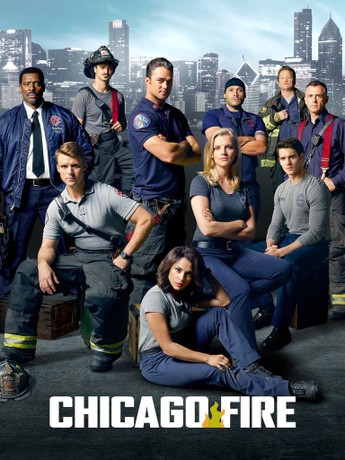In a decision that has sent shockwaves through Hollywood and beyond, the Motion Picture Association (MPA) has imposed a comprehensive ban on the distribution and promotion of the highly anticipated movie Chicago Fire. Citing explicit sexual content, racist themes, and other inappropriate depictions, the MPA has taken the unprecedented step of banning the film from all movie industries, effectively blacklisting it from global circulation. This decision, which has stirred significant debate and controversy, marks a pivotal moment in the ongoing discourse about censorship, creative freedom, and the responsibilities of industry watchdogs.
The Role of the Motion Picture Association
The Motion Picture Association is a powerful and influential body that represents major Hollywood studios, including Disney, Warner Bros., Universal Pictures, Sony Pictures, Paramount Pictures, and Netflix. It plays a central role in shaping industry standards, including the enforcement of content ratings, combating piracy, and advocating for the interests of its member companies. Over the years, the MPA has been pivotal in promoting ethical filmmaking and ensuring that content adheres to societal norms and legal regulations.
However, the association has also faced criticism for its opaque decision-making processes and the perceived arbitrariness of its rulings. The ban on Chicago Fire has only intensified these criticisms, with many industry insiders questioning the MPA’s transparency and the fairness of its censorship practices.
The Controversial Content of Chicago Fire
Chicago Fire, a film adaptation of the popular television series, was set to be a blockbuster hit, expanding the narrative of the dedicated firefighters of Firehouse 51 into a more mature and dramatic format. While the TV series has been praised for its portrayal of heroism and teamwork, the movie reportedly took a darker turn, delving into themes of corruption, betrayal, and personal demons that pushed the boundaries of acceptable content for mainstream audiences.
According to the MPA, the decision to ban Chicago Fire was based on several key issues:
- Explicit Sexual Content: The film contains multiple scenes of graphic sexual nudity that the MPA deemed excessive and gratuitous. These scenes, which reportedly involve some of the main characters, were judged to be beyond what is permissible even for an R-rated film, and their inclusion was seen as not contributing significantly to the plot or character development.
- Racist Themes and Language: Perhaps the most damning element cited by the MPA is the movie’s portrayal of racial stereotypes and the use of offensive language. The film allegedly includes scenes that depict characters engaging in racially insensitive behavior and dialogue, which the MPA found to be not only inappropriate but also harmful. This aspect of the movie has been widely condemned as fostering negative stereotypes and failing to provide the necessary context or critique that could justify such portrayals.
- Other Illegal and Controversial Depictions: In addition to nudity and racism, the film reportedly includes scenes of drug use, excessive violence, and other illegal activities that, according to the MPA, were portrayed in a manner that glamorized or trivialized their seriousness. The depiction of these actions, combined with the lack of moral resolution or consequences, contributed to the MPA’s decision to ban the film entirely.
The Industry’s Response and Implications
The MPA’s decision has sparked a fierce backlash from the film’s producers, cast, and fans. The production studio behind Chicago Fire expressed deep disappointment with the MPA’s ruling, arguing that the movie was intended for mature audiences and that its themes, while provocative, were integral to the story’s message. “This film was designed to push boundaries and start conversations,” said a spokesperson for the studio. “It is unfortunate that the MPA has chosen to silence those conversations rather than engage with them.”
Critics of the MPA’s decision argue that the ban represents an overreach of the association’s authority and a stifling of artistic expression. They contend that mature content, including depictions of complex and uncomfortable themes, has long been a part of cinema’s role in reflecting and challenging societal norms. By banning Chicago Fire, the MPA is perceived as setting a precedent that could discourage filmmakers from tackling controversial subjects, thereby narrowing the scope of storytelling in the industry.
On the other hand, supporters of the ban argue that the MPA is fulfilling its duty to protect audiences and uphold ethical standards in filmmaking. They point out that there is a fine line between challenging content and harmful content, and that the MPA’s actions are necessary to prevent the normalization of inappropriate or damaging portrayals.
Broader Impacts on the Film Industry
The ban on Chicago Fire is more than just a setback for one film; it is a signal to the entire industry about the boundaries of acceptable content. For studios and filmmakers, this decision underscores the importance of considering the MPA’s guidelines early in the creative process to avoid similar fates. It also highlights the need for clearer communication and transparency from the MPA regarding its standards and decision-making processes.
This incident may also influence how other countries’ film boards and censorship bodies view and regulate similar content. While the MPA’s jurisdiction is primarily the United States, its influence extends globally due to the dominance of Hollywood films in international markets. Other regulatory bodies may look to the MPA’s decision as a benchmark for their own actions, potentially leading to a more conservative approach to content regulation worldwide.
Furthermore, this controversy raises important questions about the balance between censorship and creative freedom. As filmmakers continue to explore challenging and diverse narratives, the industry must navigate the complex terrain of audience sensitivities, ethical considerations, and the evolving standards of what is deemed acceptable. The ban on Chicago Fire serves as a stark reminder of the power that regulatory bodies wield and the impact their decisions can have on the artistic landscape.
Moving Forward
The MPA’s ban on Chicago Fire has undoubtedly ignited a heated debate within the film community. As the industry grapples with the fallout from this decision, it will be crucial for all parties involved to reflect on the roles and responsibilities of both filmmakers and regulators. Whether this ban will lead to lasting changes in how controversial content is handled remains to be seen, but it is clear that the conversation about censorship, creative expression, and the ethics of storytelling in cinema is far from over.









